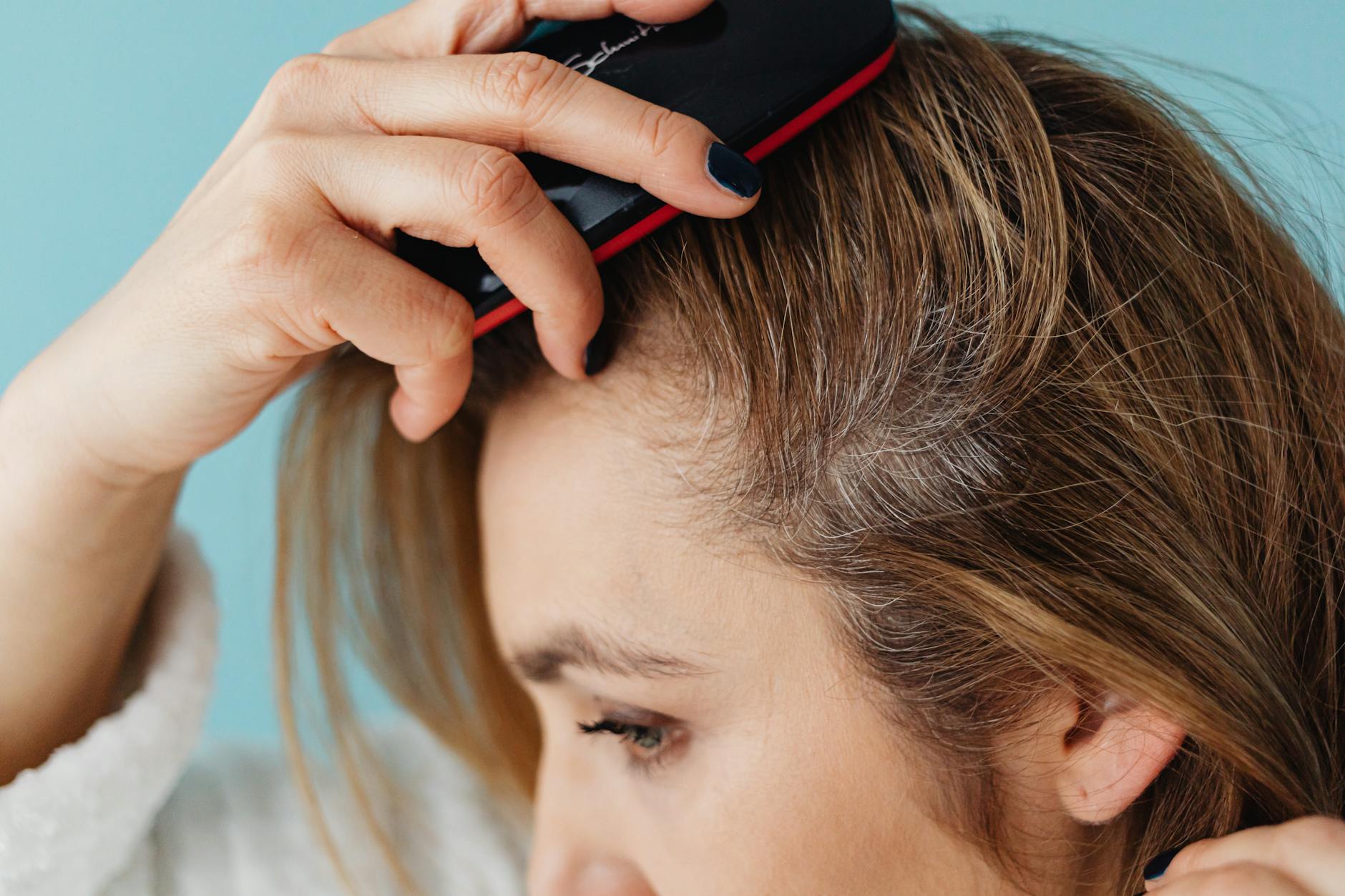Our Location
304 North Cardinal St.
Dorchester Center, MA 02124

Maya discretely brushed white flakes from her black blazer for the third time during the meeting. Her scalp felt like it was on fire, itching incessantly, but she couldn’t scratch without drawing attention to her dandruff problem. At 26, she felt like she was fighting a losing battle against her own scalp, and no amount of expensive shampoos seemed to help.
Recent studies reveal that 50% of women experience scalp issues, yet 76% suffer in silence due to embarrassment. Dr. Jennifer Kim, a dermatologist specializing in scalp disorders, explains, “Scalp health is the foundation of hair health. An unhealthy scalp creates an environment where hair cannot thrive, no matter how many hair products you use.”
The statistics are alarming: 42% of women report chronic scalp itching, 38% experience visible flaking, and 29% have both symptoms simultaneously. These issues don’t just affect appearance—they can lead to hair loss, infection, and significant psychological distress.
Scalp problems stem from an imbalance in the scalp’s natural ecosystem. Overgrowth of Malassezia yeast, a naturally occurring fungus, causes inflammation and excessive skin cell turnover, leading to flaking and itching. Stress, hormonal changes, and poor circulation compound these issues.
Environmental factors worsen scalp conditions: hard water mineral buildup clogs pores, harsh chemical shampoos strip natural oils, and pollution creates oxidative stress. Even seemingly innocent habits like over-washing or using hot water can disrupt the scalp’s delicate pH balance.
Scalp issues affect women’s confidence and social interactions in profound ways. Research from the International Journal of Dermatology found that women with scalp problems experience anxiety levels comparable to those with chronic skin conditions, and 62% report avoiding dark clothing to hide flakes.
Consider Amanda, a 31-year-old sales executive who started wearing her hair in tight buns to hide her scalp issues. “I was constantly paranoid about flakes on my shoulders,” she recalls. “I stopped wearing my favorite black dresses, avoided head-to-head meetings, and even turned down a promotion because it involved more public speaking where people might notice my scalp problems.”
The scalp care industry offers numerous expensive treatments that often provide temporary relief without addressing underlying causes. Medicated shampoos cost $25-$45 per bottle and must be used indefinitely. Scalp treatments at salons range from $75-$200 per session with short-lived results. Prescription medications can cost $300-$500 annually and may have side effects.
Take Christina’s experience: she spent over $1,500 annually on medicated shampoos, scalp treatments, and dermatologist visits, only to find her symptoms returning within weeks of stopping treatment. “I felt like I was managing symptoms instead of solving the problem,” she says. “My scalp was dependent on expensive treatments, and I was trapped in an endless cycle.”
The first step in healing scalp issues is understanding that a healthy scalp is the foundation of beautiful hair. Your scalp problems aren’t a reflection of poor hygiene or inadequate care—they’re often the result of imbalances that can be corrected with the right approach.
Many women blame themselves for scalp issues, thinking they’re not washing enough or using the wrong products. This self-blame is counterproductive—scalp health is influenced by genetics, hormones, stress, and environmental factors, many of which are beyond your immediate control.
A new approach to scalp care focuses on restoring balance rather than aggressive treatment. This method combines improved circulation with targeted light therapy to create optimal conditions for scalp health and hair growth.
The key is understanding that scalp healing takes time—skin cell turnover occurs every 28 days, so visible improvement requires 6-8 weeks of consistent care. Sustainable scalp health requires patience and consistency, not harsh treatments that provide temporary relief.
A healthy scalp requires the right balance of beneficial bacteria and proper pH levels. Natural antimicrobial ingredients like tea tree oil, zinc, and selenium can help control harmful yeast overgrowth while supporting the scalp’s natural protective barrier.
Studies show that gentle, natural scalp treatments can reduce inflammation by 50% and restore healthy microbial balance within 6-8 weeks. The key is supporting your scalp’s natural healing processes rather than disrupting them with harsh chemicals.
Three months after starting her LED scalp therapy routine, Maya wears her favorite black blazer with confidence. “The itching stopped within two weeks,” she explains. “But the real change was gradual—less flaking, then healthier-looking hair, then finally the confidence to wear dark colors again.”
Her transformation extended beyond scalp health—she started experimenting with new hairstyles, stopped obsessing over her shoulders, and even got the promotion she’d been avoiding because she was no longer afraid of close interaction with colleagues.
Your scalp health journey doesn’t have to be a constant battle against itching and flaking. With the right approach, consistency, and patience, you can restore your scalp’s natural balance and create the foundation for healthy, beautiful hair.
Remember: a healthy scalp is the secret to gorgeous hair. Every small improvement in scalp health creates ripple effects that benefit your overall hair health and confidence.